june foraging report: fiddleheads, spruce tips and fireweed greens (oh my)
making spruce tip syrup, scones, and the week of fiddlehead *everything*
cooking wild things in June: fiddlehead ferns, spruce tips and fireweed greens
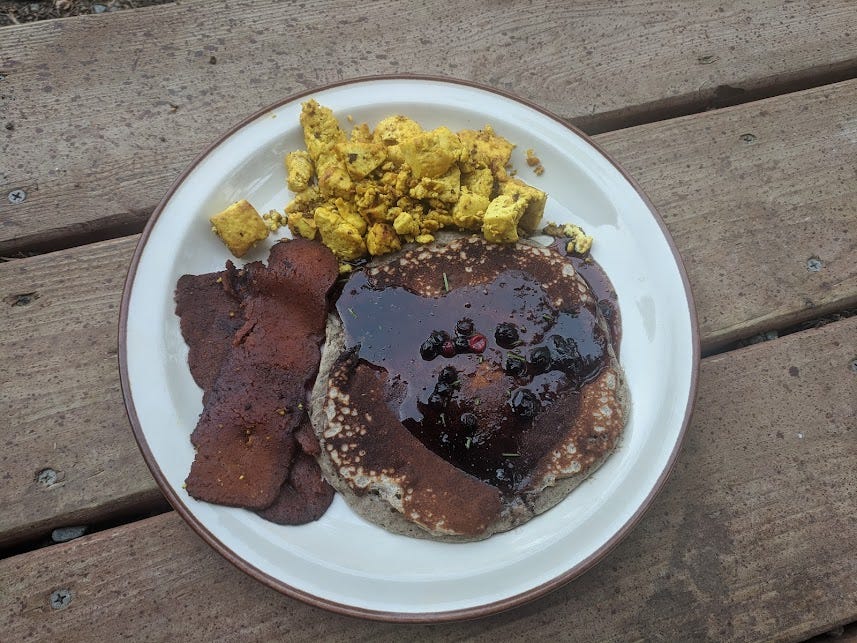
but first - on foraging & fiddleheads…
I’m writing to y’all from inside a sinkful of mossy brown fiddlehead ferns. Okay, not quite, but I had quite the experiment with cleaning and cooking my way through a big bag of fresh fiddlehead ferns in early June. I rinsed, I soaked, I dry-scrubbled, I watched youtube tutorials, I ran under water…and let’s just say that I dearly held my appreciation for running water in our cabin and shelved any & all plans for fresh pasta making to go with these wild edibles. Holy moly.
We’re barely on the other side of a week-plus of fiddlehead everything. Fiddlehead this, fiddlehead that. If the cast iron was hot, or the oven was going, I was throwing in these curling fern fronds.
I would tell you that the best part of these fiddleheads was that I didn’t even have to pick them myself, but that’s so not true. I enjoy foraging! Connecting to the planet. Where the wild things are. Studying as I go. Not shopping at a store!!
Those are all straight up perks of learning & foraging & learning & foraging some more as I get older, living amongst so much relatively untouched land in Alaska, historically & perpetually: Dënéndeh/Tanana Athabascan grounds.
That said, it is officially mosquitos-EVERYWHERE-season and it’s already worse than last year, but, that’s what headnets and focus are for.
Medium story short, Jules had come across a few fiddleheads while hiking with friends a bit just south of the Denali area. Seeing Jules’ delight as they nibbled on a raw one (and survived! although this is not advised!) and then picked a few more to bring home to me, the friends later shared a surplus from a foraging spree the day before in the Matanuska Valley….which leads me to believe these were Ostrich ferns.
Personally, I never foraged in a city until last summer, when I picked saskatoons and mulberries from trees with my sister in Brooklyn.
Oh, back in my Portland days, I picked from overlooked neighborhood fruit trees, and abundant berry vines and bushes here & there. I went U-picking on Sauvie Island with friends those few times someone offered a ride when I could take off from work (oh, those M-F years…)
Years ago, camping with friends, we picked these mesmerizing young fir tips and infused the whiskey for that weekend’s campfire. A delight.
Up here, admiring and studying, breathing in and foraging during the short sorta-spring and burst of summer has become my version of hitting up neighborhood farmers markets twice a week for the hyper-seasonal back in the Northwest.
I can’t stroll to a store, but I can walk into the forest.
As for the fiddleheads, I can recall buying these odd little curls in the early 2000s when I first moved to Portland. I braised them with beer and cooked them on a cast iron grill pan on my old electric stove. Did I like them? Did I truly prepare them “correctly”? Who’s to say!
I do know that I wanted to try nearly everything I came across at the sprawling PSU farmers market. I still do, although that now rings way more true for foraging vs. my rare trips to a market.
the fiddlehead photo diaries
I can picture little baskets and bulk displays of fiddleheads at the co-op and New Seasons through the years - not cheap - and let me express - although I am by no means disappointed - it's really the opposite, an excitement - those were way cleaner than what Jules brought home! Perhaps some were cultivated vs. foraged…gasp!
Or is Alaska just far wilder? We should all know the answer to that one.
I’ve since tried dry-cleaning, rinsing under running water, soaking and then attempting to clean, and then sorta-scrubbing them under running water some more. It’s all tedious, although fascinating.
on preparing wild fiddleheads…
Most importantly, you want to clean them well to remove the brown moss/fuzz/stuff, and (par)boil OR steam for 10-15 minutes. You can then throw in a hot pan on the stovetop or oven (or fire) for a brief stint, or just eat with lemon & salt & pepper.
Did I often shorten the boiling time and feel fine after cooking? Yes.
Does all wild food come with a much-advised heads up to research what you’re doing and be forewarned that your stomach may have an upset after a lifetime of farmed & packaged & not-so-wild food? Yup.
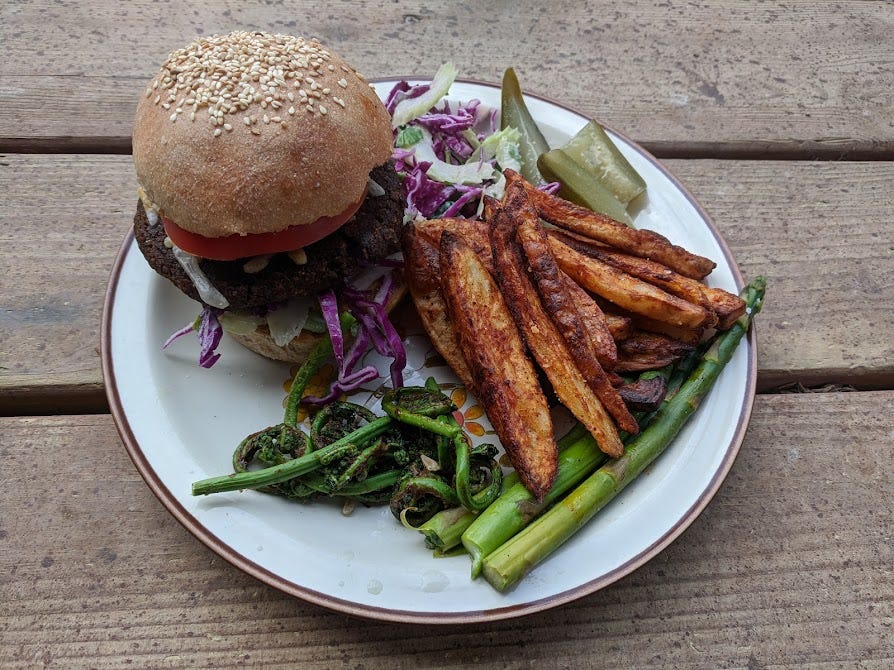
how to cook fiddlehead ferns:
Clean + Boil: 10-15 minutes and then drain under cool water. Immerse in an ice bath if it’s gonna be a while.
Sauté: Add the boiled and drained fiddleheads to a hot pan, in my case, typically after cooking aromatics (minced garlic, ginger, sliced chiles) for a minute or two first. Cook for another minute or so, stirring to sear different pieces, turn off the heat, add a little salt, pepper, and a squeeze of fresh lemon or lime juice. Also great with a bit of pounded Sichuan peppercorn, curry pastes, and fermented black bean sauce.
Roast: Similar to the steps above - I took to throwing them in a hot oven around 400F or 425F along with whatever else was roasting (potatoes or asparagus, for two) during the final few minutes of cooking. Ditto to the flipping, seasoning and acid.
Steam: Simply clean and steam over water for 15 minutes. Eat immediately with a little acid (lemon juice or a good vinegar), salt and pepper.
OK, I was watching Masterchef New Zealand a few days ago, and I was just so impressed by the respectful, modern-day (yet timeless!) appreciation for regional ingredients and foraging by the contestants during the audition rounds.
Much to my delight, I learned that the vibrant Māori “pikopiko” that one chef topped a steak of some sort with were the fiddlehead ferns I was making my own way through! This led me into researching the culinary traditions and “hip” modern uses of fiddleheads on every continent I could find information on.
Plus, as many fiddlehead search results and referenced archaeological studies can tell you – they predate dinosaurs! Imagine ancient lush ferns!!
(if you know, you know)
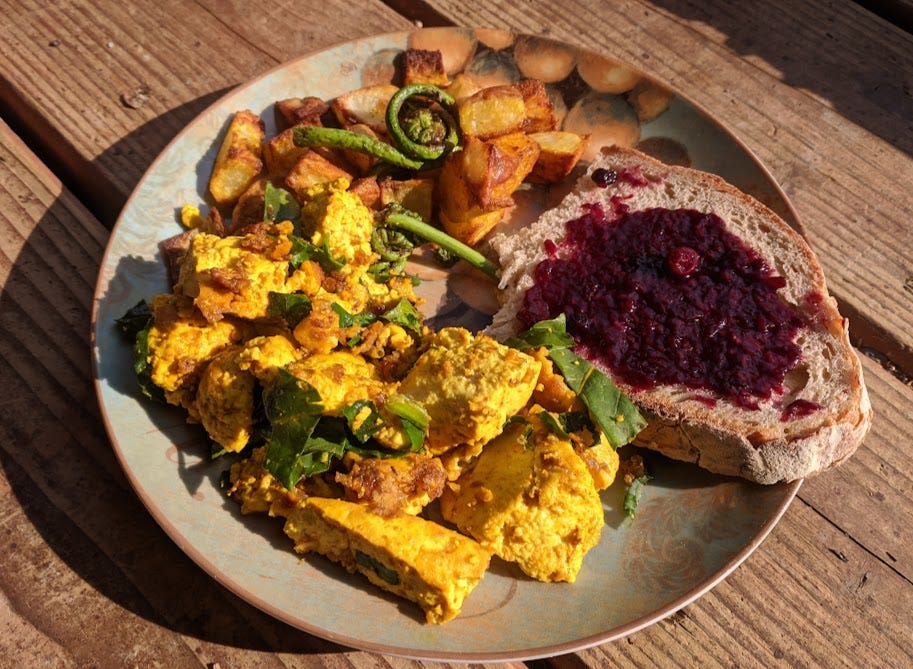
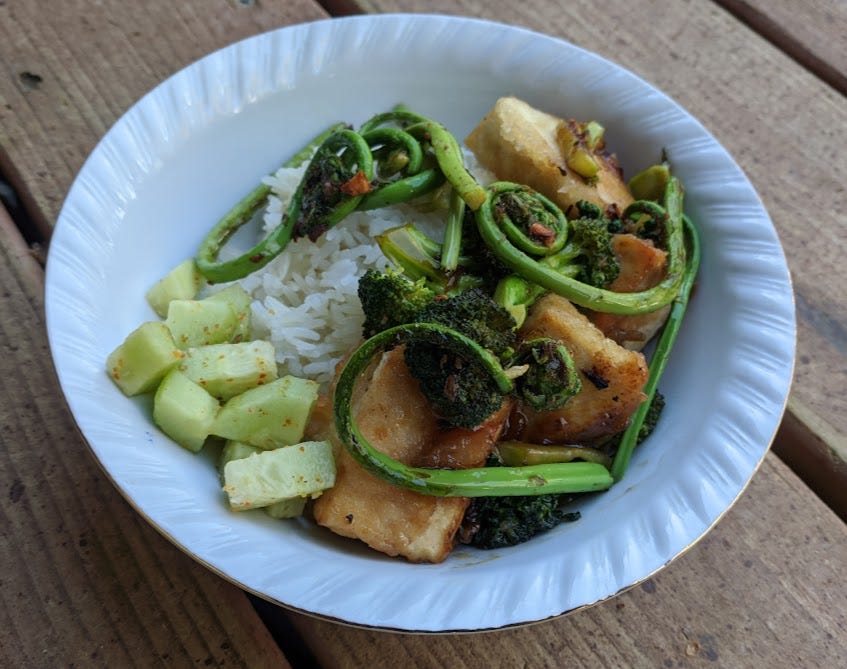
Btw, pretty sure this is the same recipe up on Serious Eats circa April 2020 (which makes sense - see also: what a time). It *also* calls for fermented black bean sauce, which I am clearly very into lately.
And while I have YET to acquire a wok after our move, J. Kenji López-Alt’s latest book (not surprisingly, duh x 1,000) remains an inspiring, epic read.
now look up- we’re moving on to spruce tips ~
Unlike fiddlehead ferns, which I didn’t know were quite so close to “home”, we’ve been harvesting the everywhere-you-look spruce tips up here each late spring since we came to the interior. A good rule of thumb is to pick them immediately as they first green-out, sporadically, and from BIG trees.
I’ve now done spruce tip syrup, spruce-y citrus jam, coconut-based ice cream, lemon-sourdough discard loaf, scones, shortbread, lemonade and what I thought was an interesting green sugar (…and then Jules asked if it was slime, ahem).
These spruce tips were infused whole into a syrup to sweeten lemonade, the pancakes at the very beginning of this ‘scrap, and more to come for a taste of the forest. The lemon-limeade has been lovely, and really, truly, makes me wish we had tequila for spruce tip margaritas and spruce tip salt rims. To be continued.
1:1:½ Spruce Tip Simple Syrup for Spruce Tip Lemon-Limeade
Boil together the following in a saucepan: 1 cup water + 1 cup sugar + ½ cup rinsed spruce tips.
Bring to a boil, and simmer for 5ish minutes, until the sugar is dissolved.
Let steep an additional 25-30 minutes, covered.
Strain well into a jar, label, and store refrigerated (will keep a few weeks or longer).
Use to sweeten a glass or bottle of water + fresh lemon & lime juice as you like. Lemonade is so taste-subjective or I’d be a bit more specific here!
Serve over ice or chilled. Shake/stir before sippin’.
These spruce tip scones are based on my go-to non-sourdough scones (what a mouthful). A handful of minced fresh tips are folded into the dough and are later iced with a lemon & spruce tip extract glaze. I want to try them as uh, plops of dough vs. cut out rounds.
I gave a neighbor a sample duo, warned him “they were a little weird”, and later learned they didn’t even make it into his house to share with his spouse because he liked them so much! Gosh.
Don’t worry, I went weirder soon enough.
The following spruce tip shortbread are adapted from this recipe over at The Kitchn.
Duh, I swap soy-free Earth Balance sticks for the dairy butter, and began with a pulsed spruce tip sugar in a food processor vs. a mixer and hand chopping. I also added a teaspoon of cornstarch, since that’s a thing in other shortbread cookies, went for 1/2 cup spruce tips, and both lime juice and zest for a little more pop.
This is the second? third? year in a row I’ve made them and similar rose petal shortbread, and while they’re admittedly crumbly, we really do like them.
Next up is an experiment with blending spruce tips into milk for something resembling a tree smoothie. The end result was rather hippie, almost in the way you’d think there was something special about it.
There definitely was, but those were some cranberries and blueberries, I swear, ‘cause who cares and that other stuff is legal here anyway! : )
Okay, and I did sweeten an oat milk latte with the spruce syrup the other day. I couldn’t resist. Not bad at all.
Will I have the following jar (and tincture) so long it will be considered vintage? I hope so.
lastly, one more chapter of June foraging bouts: fireweed greens 💕
It may look sorta like rosemary, and there is bog rosemary here, but that’s not one to eat. What we have below is a green and red-tinged plant that grows particularly after fires have ravaged an area, and from what I recall from past research, grows in 49 out of 50 of the current US states.
Here in the 49th, this evening primrose blankets the land in these little shoots (which can be eaten and are fondly pickled as “northern asparagus” !) that then grow taller, and consequently blossom into eons of pink and purple-hued flowers that eventually go to seed and cover absolutely everything.
Typing that out – picturing what’s to come – already reminds me of literally wading through pollen in Fairbanks the other week. That was surreal, and fairy-tale-esque, but rough when you’re someone whose seasonal allergies *just* resurfaced this very spring, which led to taking medication during an afternoon of city errands, promptly falling asleep on the car ride home, and waking up with a sunburn and my own lipstick smeared across my cheek. Anywhoo!
According to The Boreal Herbal: Wild Food and Medicine Plants of the North by Beverley Gray and CERTAINLY, countless generations of deep indigenous knowledge, one can make use of the leaves and roots in the Spring, leaves and flowers in the Summer, and roots in the Autumn.
During our first summer, I made two batches of fireweed jelly - the second infused with bog blueberries.
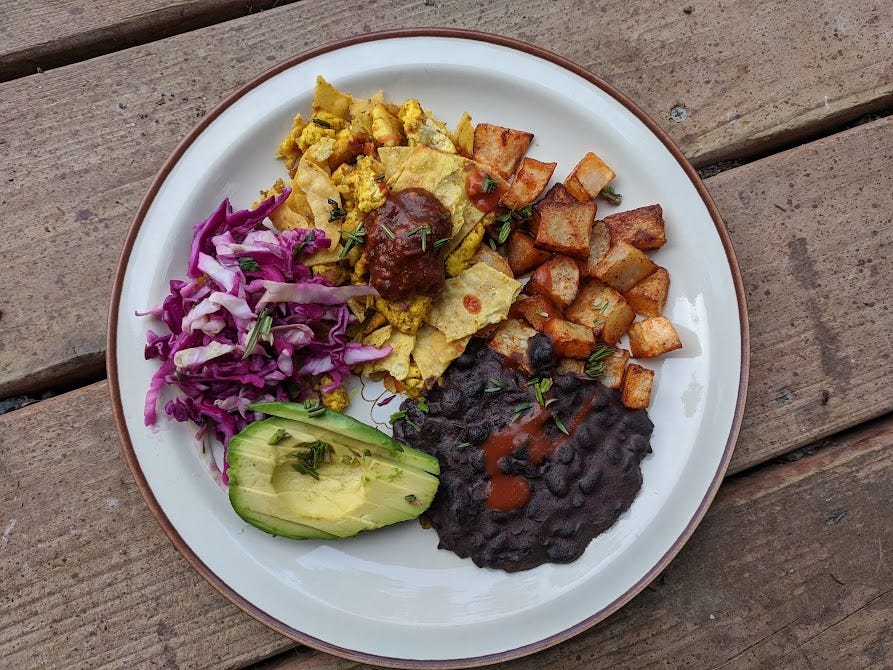
So far this year, I’ve used the early leaves as a garnish, and then a week later, harvested a bunch of the now-longer ones as a green to fold into one of my go-to pasta concoctions with calabrian chiles, olives, fresh tomato and garlic.
The young leaves are so clean and pleasant to wilt, eat fresh, or very briefly sauté.
Foraged salads soon.
River beauty (aka drawf fireweed) blossoms below alongside a pond.
Ah, yes. The pièce de résistance, if I may (and I will): last summer’s fireweed blossom, caramelized rhubarb and Alaskan berry ice cream.
Confession in reflection: I have yet to pickle of any these three. All of which is possible!
PSST, DISCLAIMERS:
~ Learn to forage with a guide/knowledgeable acquaintance or two..ideally starting out with an experienced human forager!
~ I’ve listed some resources below. Look into local foraging walks, tours, fairs, classes, and the such (we went to the Girdwood Fungus Fair in 2019 and it was nerdy & wonderful).
~ Never take *everything*. Harvest intentionally, reasonably, respectfully and sustainably. Leave some for the wildlife & the earth & future growth.
~ Write down what you find - to record and to remember *where* you found it for future years’ foraging.
~ Research how to properly forage: I’m talking picking, cutting, leaving parts of the plant, etc. and how to prepare edible plants & whatnot for consumption.
~ Ideally, don’t forage near roadways to avoid pollutants.
~ Dress comfortably & have fun!
Coming Soon: roses, juniper berries, perhaps some more dandelion honey and/or caramel, fireweed blossoms, wild rhubarb, wild sage, chickweed, currants, boletes, a plethora of berries, watching the sprouts grow in our little travelin’ garden, practically obligatory pies, dealing with mosquitos (galore) – and the kick-off ice cream of the season!
(& honestly, it’s peanut butter miso and moreso foraged from our pantry !)
What will you be looking for the next time you’re in the woods?
References + Relevant Links:
Alaska Plant Profiles: Fiddlehead Ferns, Department of Natural Resources - State of Alaska
The Boreal Herbal: Wild Food and Medicine Plants of the North by Beverley Gray
Bulletin #4198, [Food Safety] Facts on Fiddleheads, The University of Maine Cooperative Extension
Fiddlehead Ferns: Identifying, Harvesting and Cooking, Forager | Chef
It’s fiddlehead season, a favorite but fleeting time of year for foraging Alaskans, Anchorage Daily News May 23, 2021
Fiddleheads: Where They Grow and How They Taste, The Old Farmer’s Almanac
The Foraging Gourmet by Katie Letcher Lyle
Native Land Digital: Where do You Live?
Nutritional and Antioxidant Potential of Fiddleheads from European Ferns, National Library of Medicine February 19, 2021

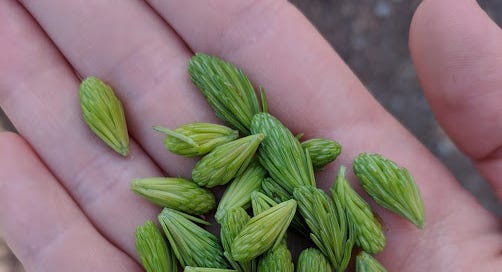


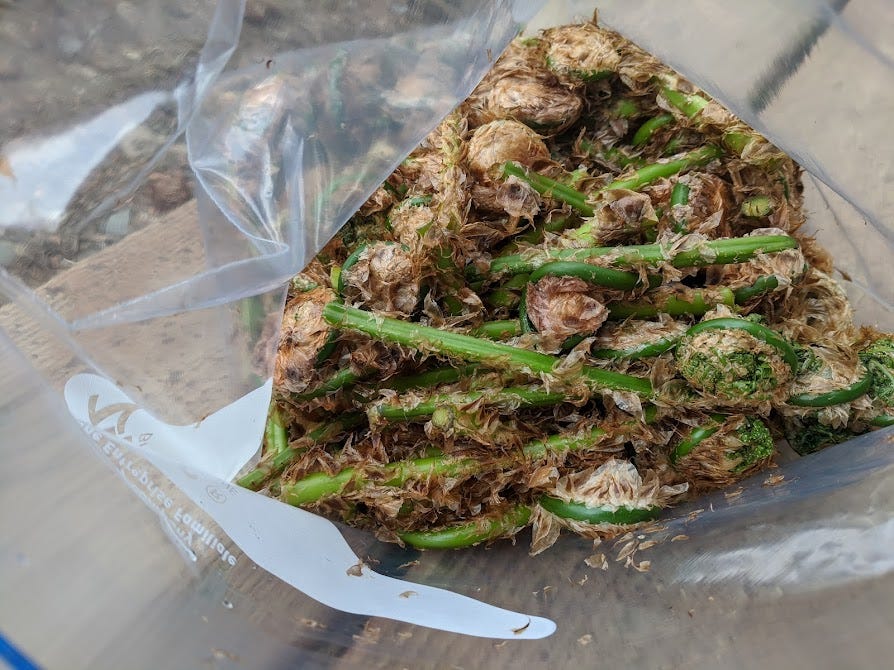
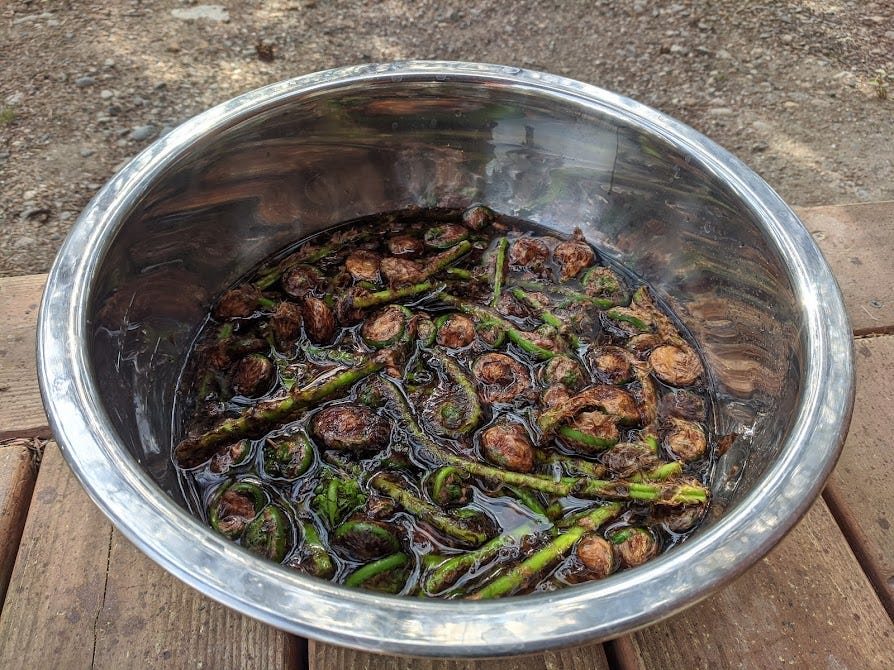
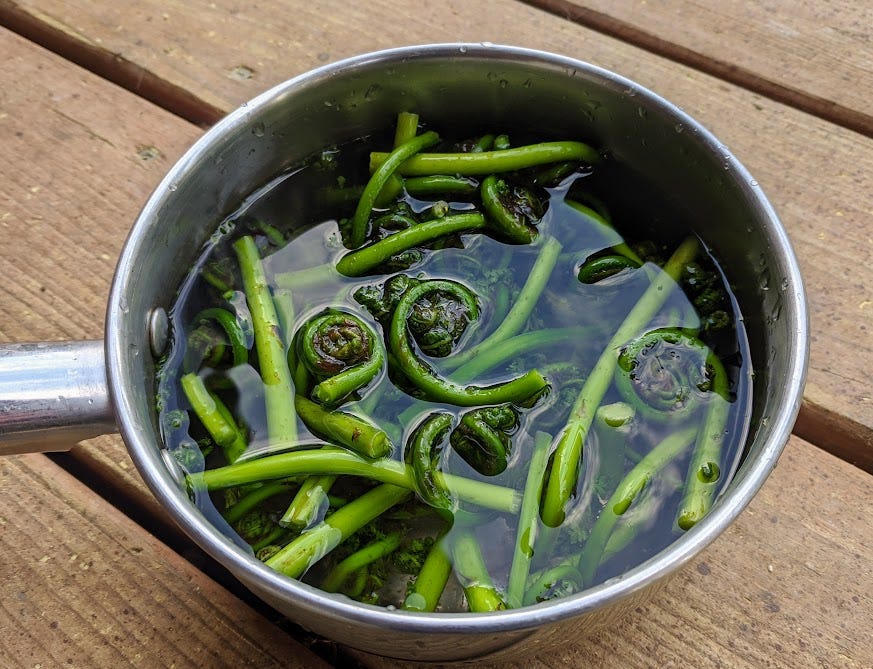
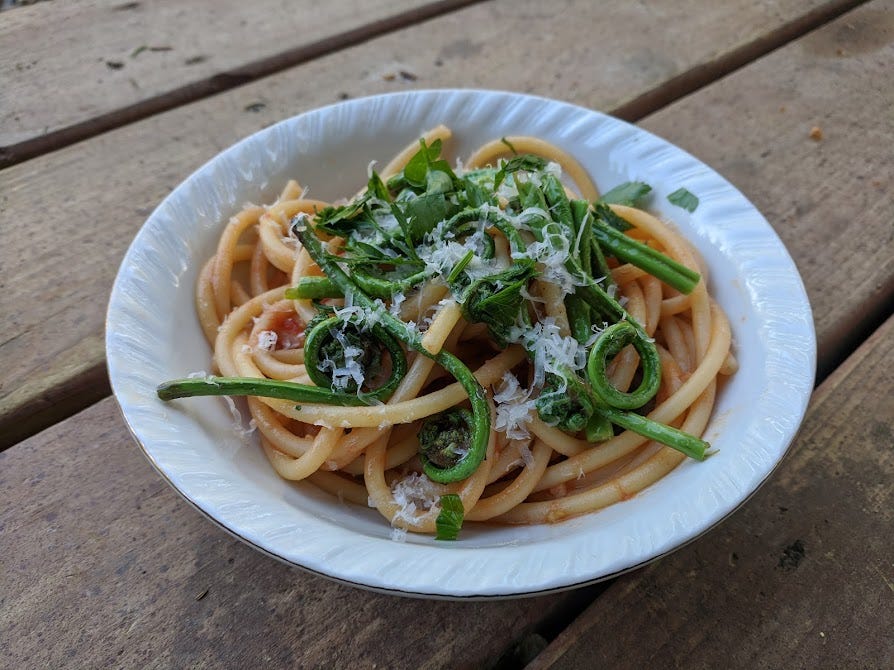

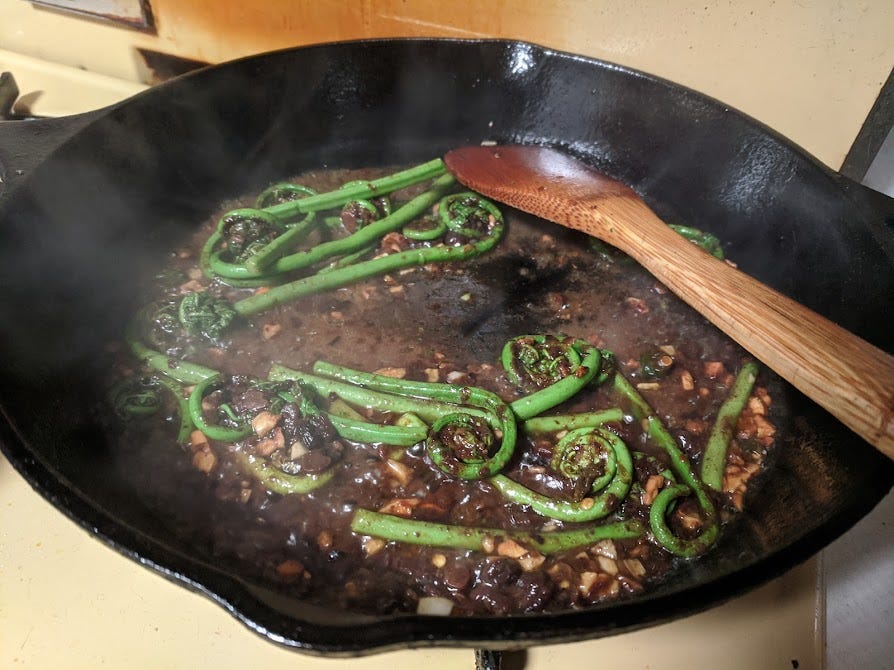
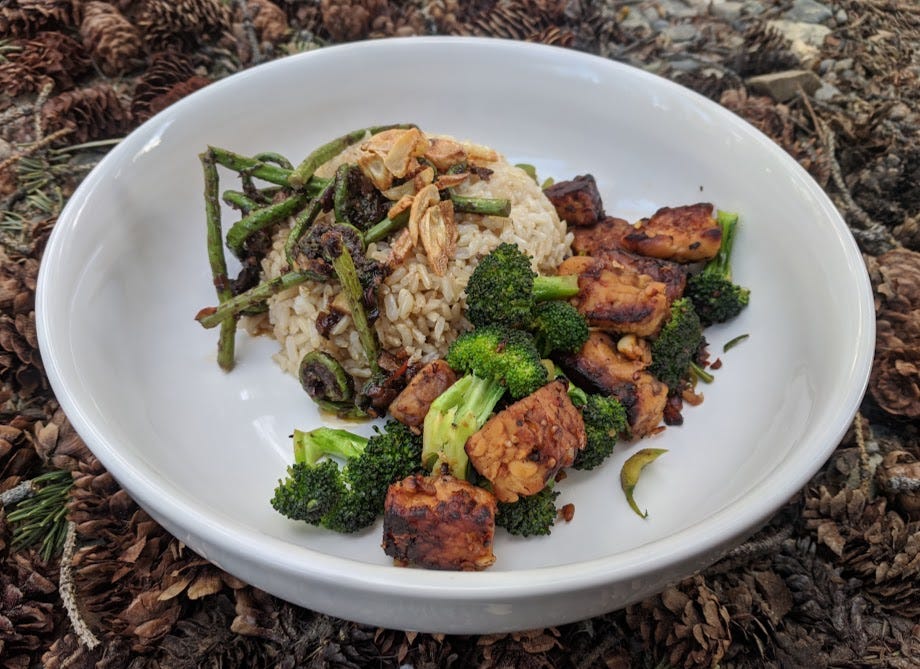



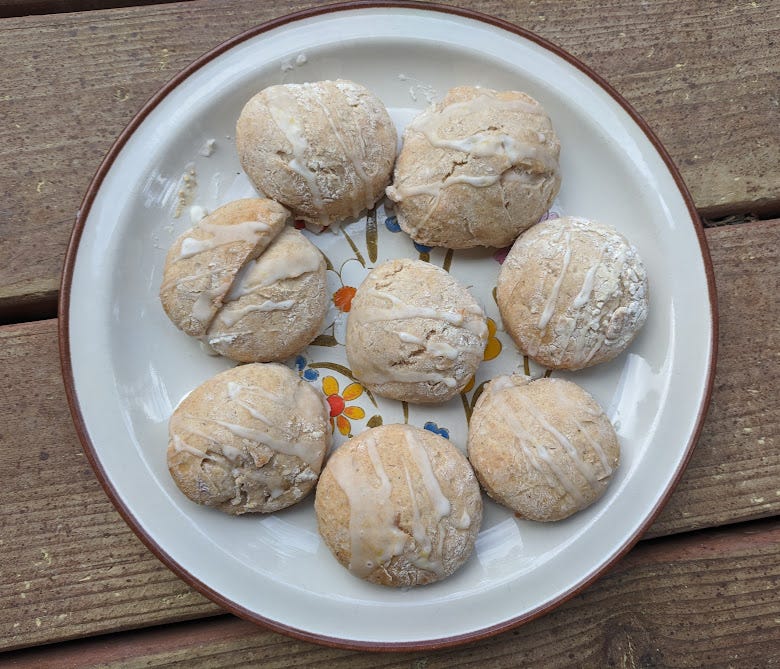
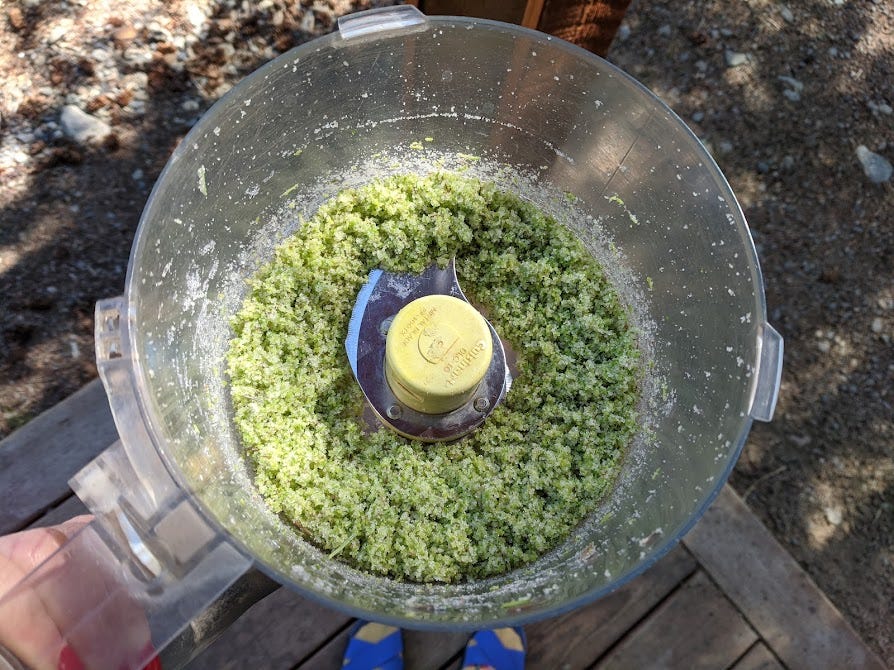
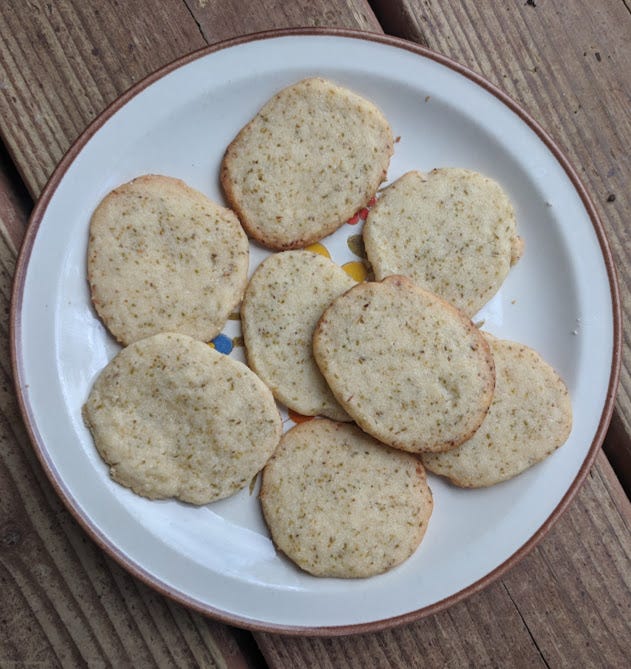
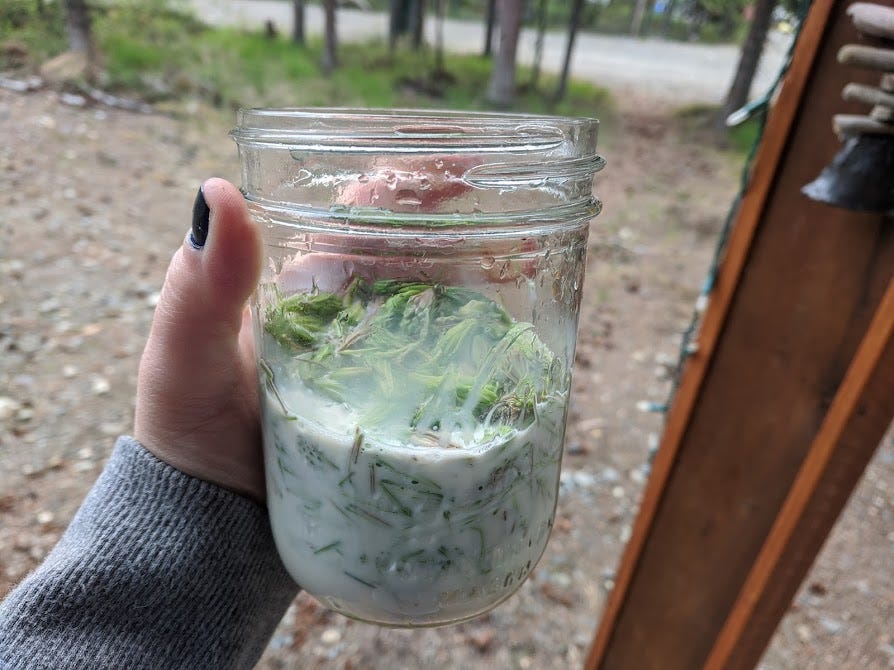
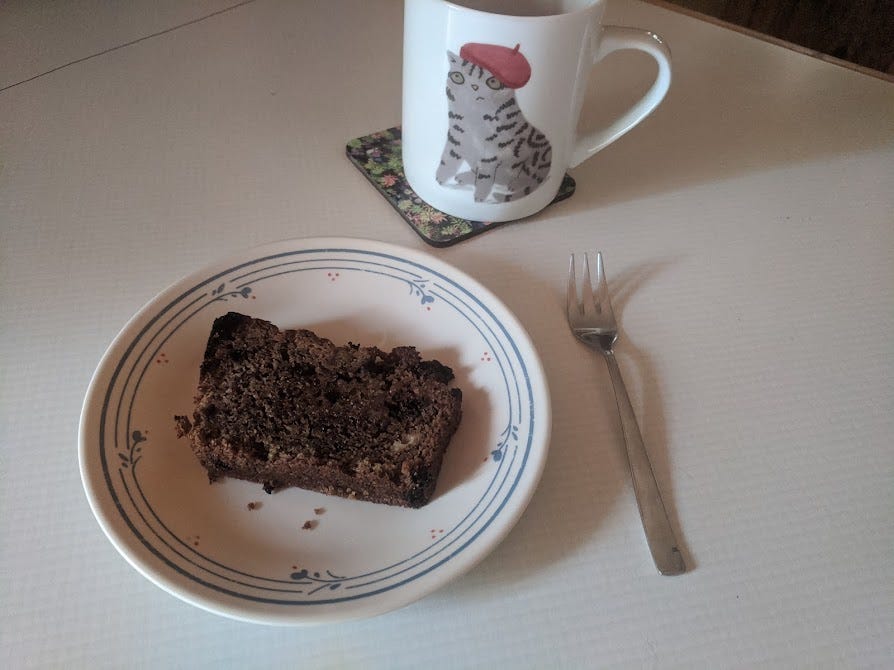
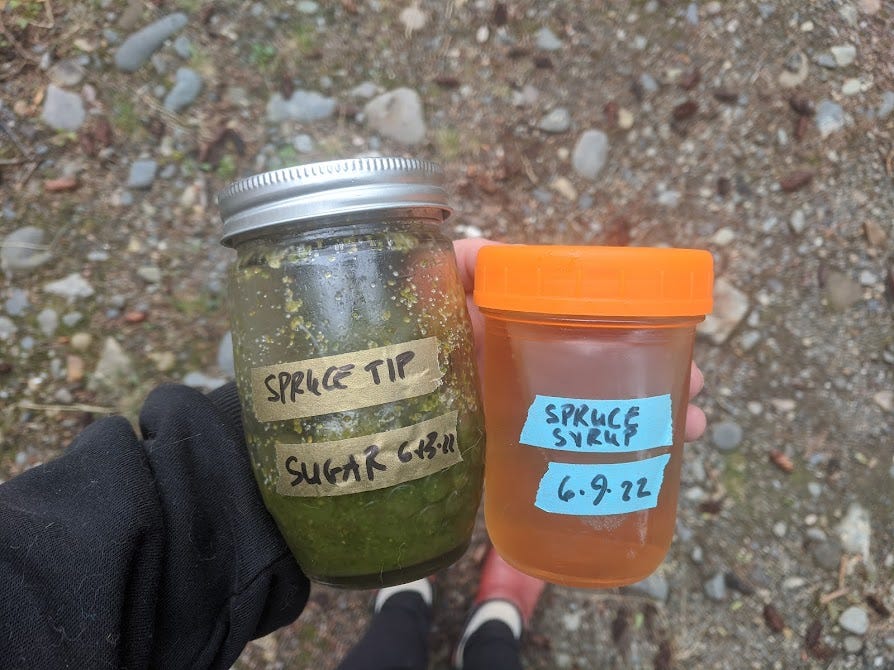

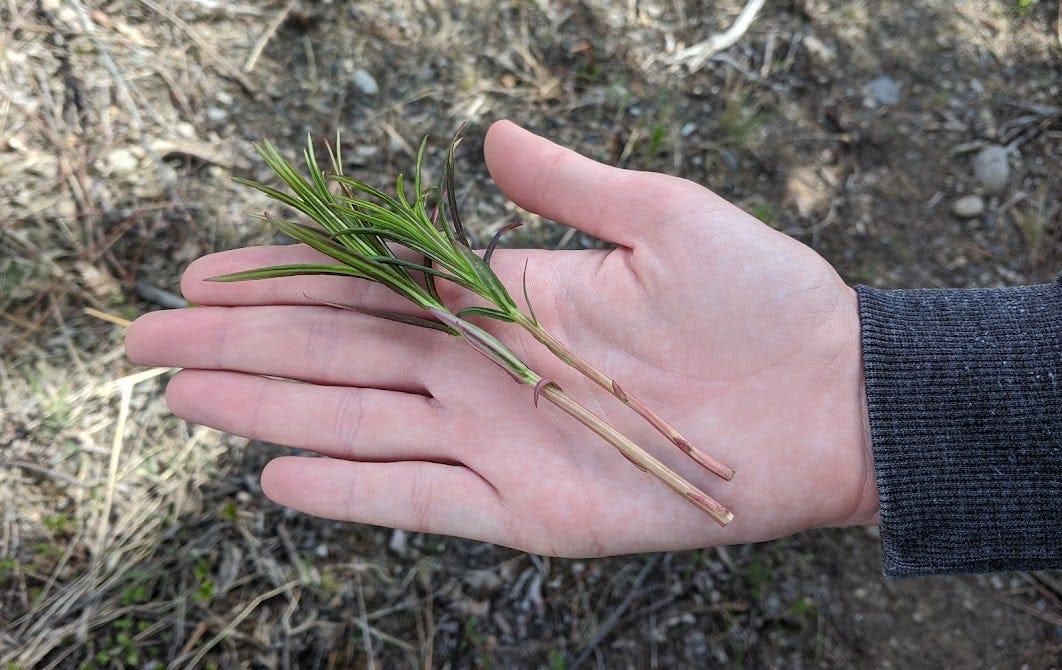
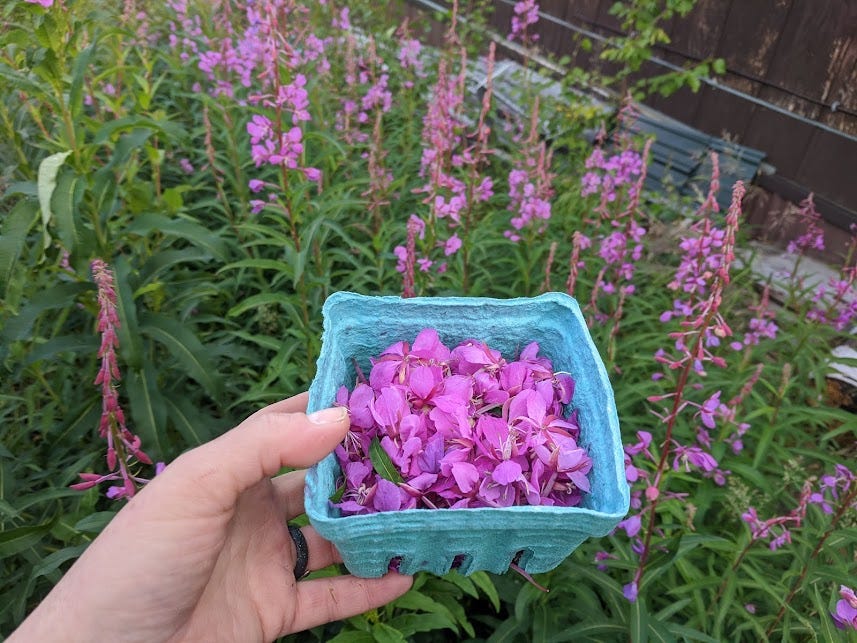

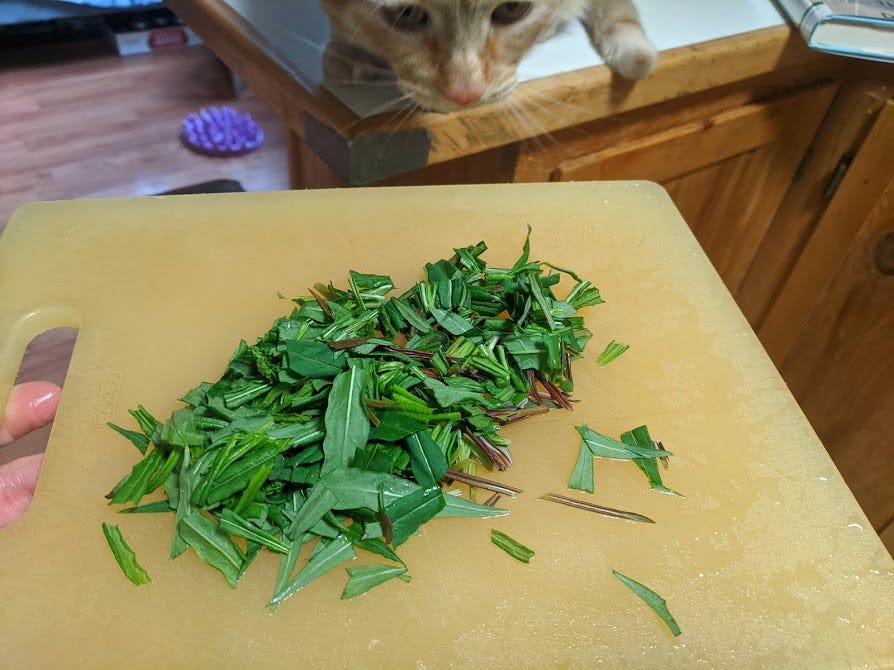

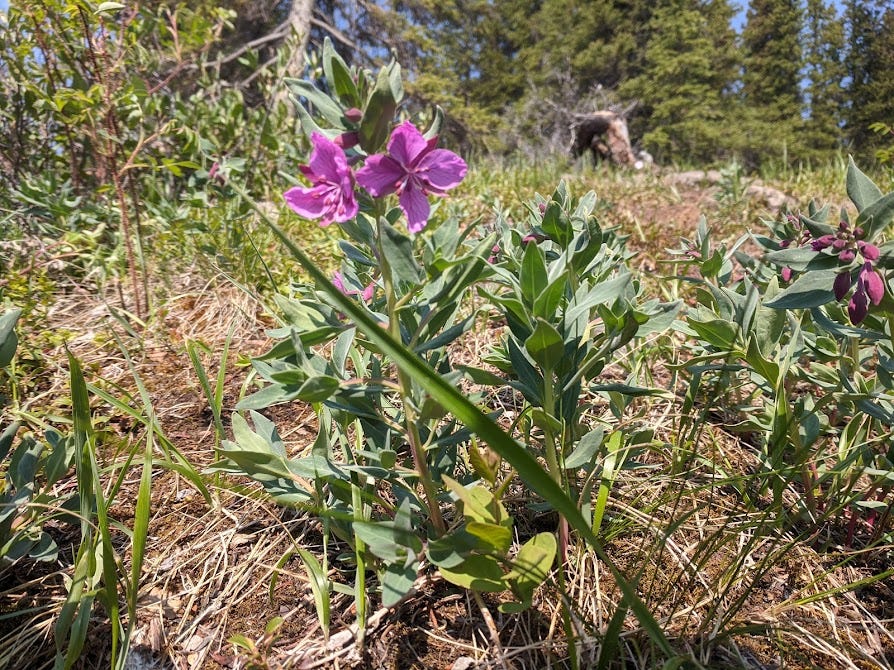
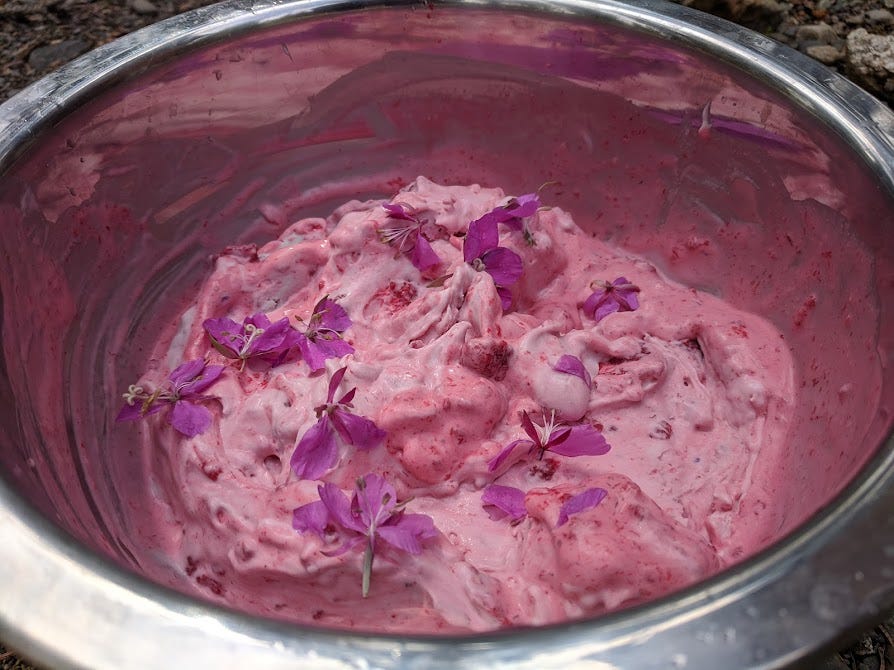
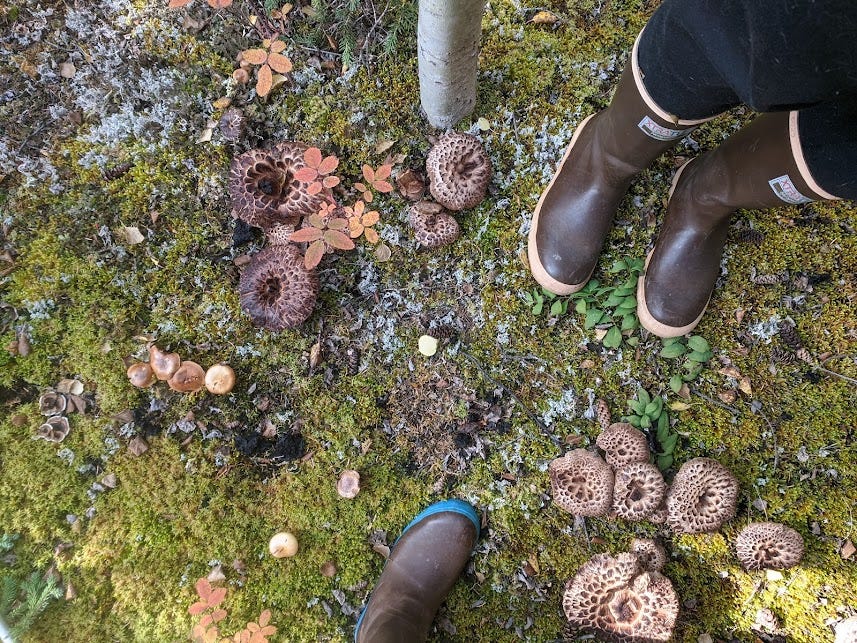
OH MY GOODNESS. You are a foraging wonder! It was amazing how many different meals you created out of just 2 little plants. Imagine also bringing that shortbread to a party and getting some quizzical (or happy) looks!
Also, Masterchef New Zealand/Aotearoa, how niche. I love it. Happy foraging and looking forward to an amazing Alaskan summer of fruit and veg!
How lovely!